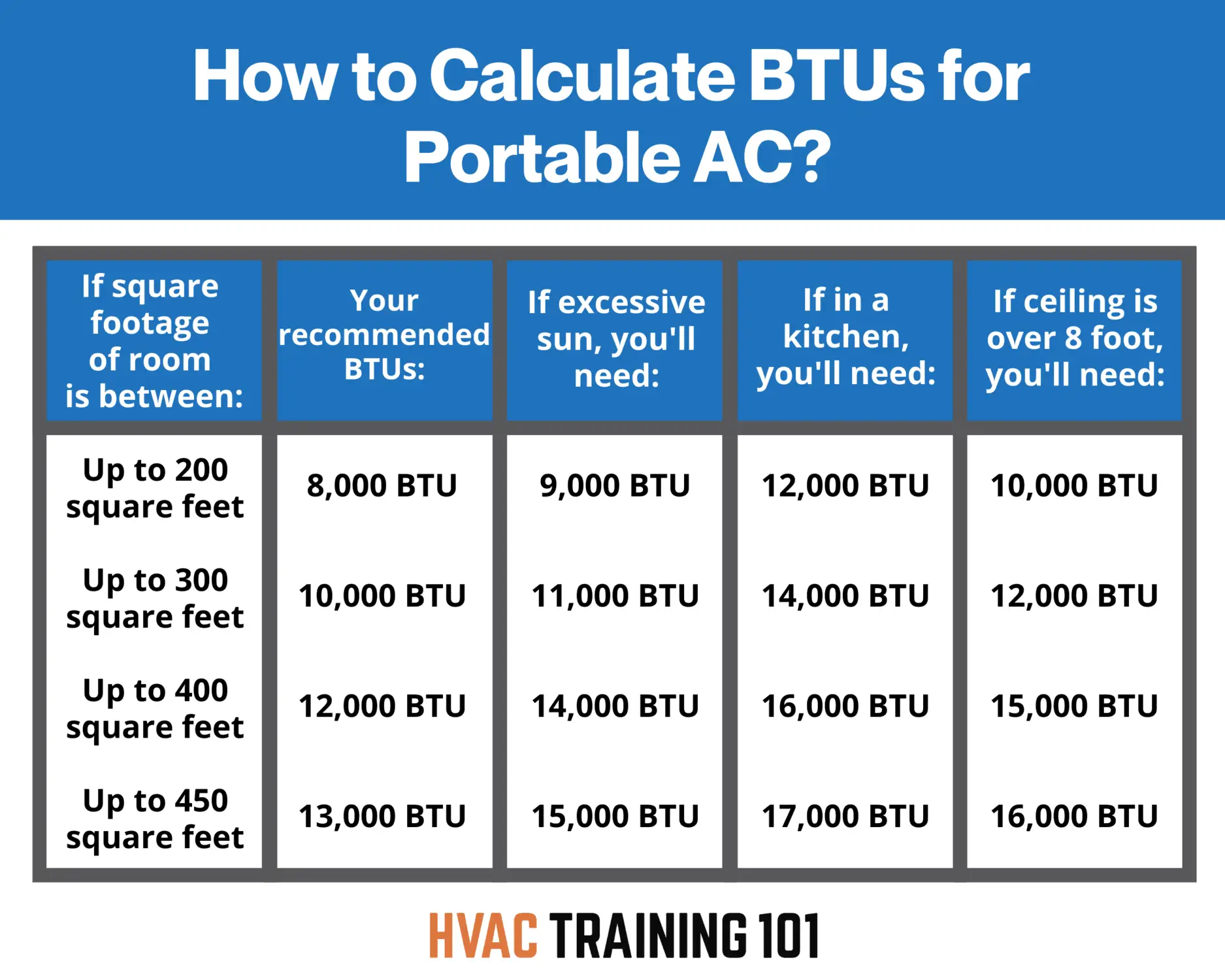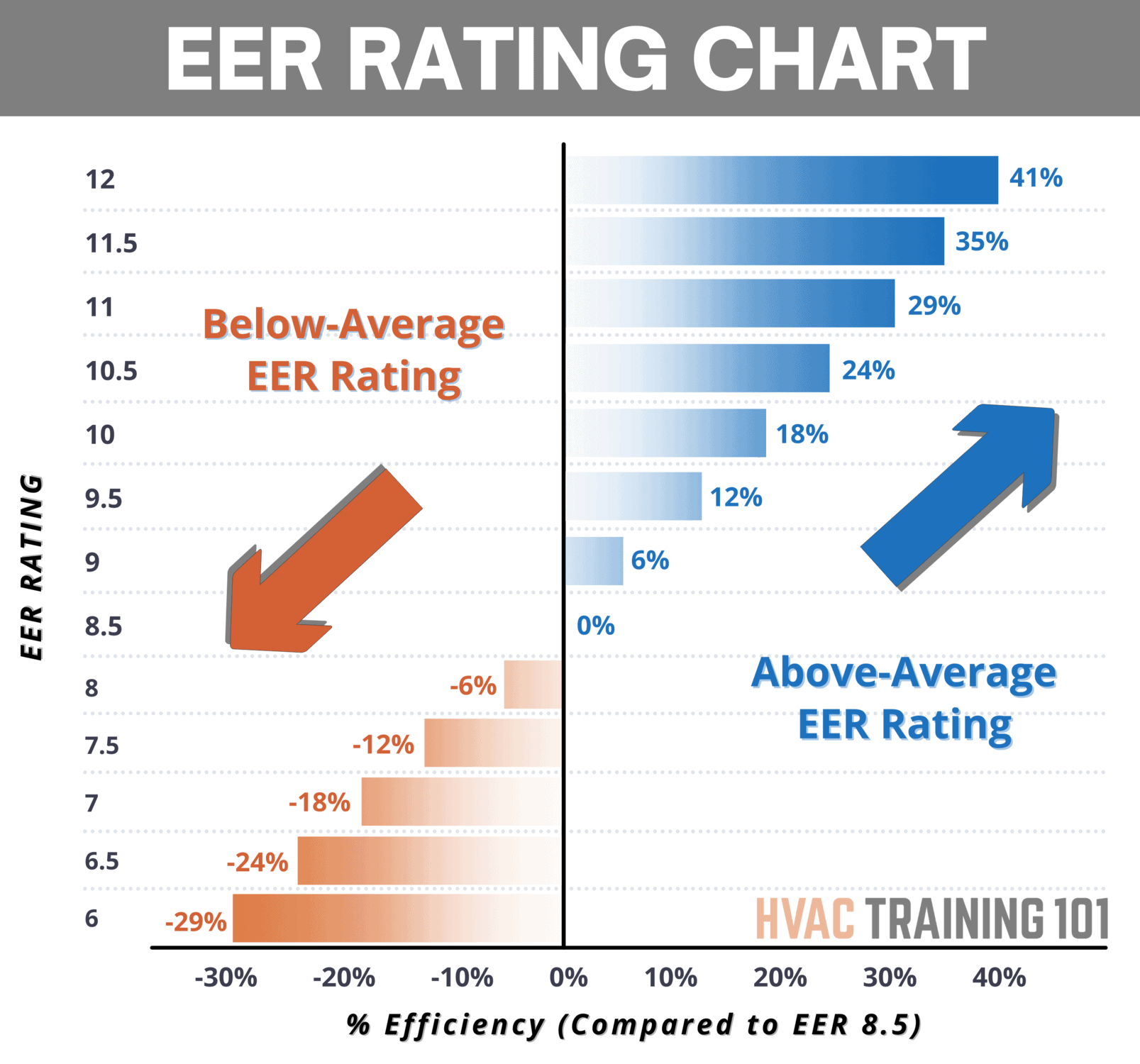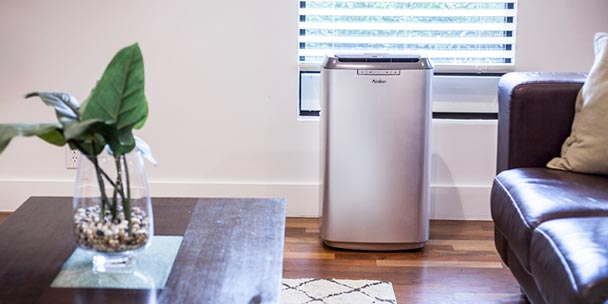As temperatures increase every year, efficient air conditioning is becoming essential rather than a luxury item. One of the most important considerations when choosing an air conditioner (AC) is energy efficiency.
Portable ACs are one of the best options in terms of cost-effectiveness. With so many brands to choose from, it’s not an easy choice.
In this review, we compare the top-performing portable ACs to help you make the right choice for your space.
At a Glance: Our Top Picks for Energy Efficient Portable Air Conditioners
- OUR TOP PICK: De'Longhi PACEL276HGRFK
- BEST BUDGET OPTION: Whynter ARC-14S
- EDITOR'S PICK: LG LP0817WSR
Comparison of the Most Energy Efficient Portable Air Conditioners
| IMAGE | PRODUCT | |
|---|---|---|
Our Top Pick  |
| View Latest Price → |
Best Budget Option  |
| View Latest Price → |
 |
| View Latest Price → |
 |
| View Latest Price → |
What to Look for in an Energy-Efficient Portable Air Conditioner
We have considered the most important factors to take into account when choosing a portable AC. These factors, aside from the cost of the unit, include energy efficiency and cooling capacity, the size of the area, and whether it’s easy enough to install the unit.
While writing this review, we keep in mind that some areas are hotter than others. It may be necessary to keep cooling equipment running longer.

Energy Efficiency and Cooling Capacity
Modern portable AC units offer various energy-saving settings, such as a timer that can be pre-set to switch on and off, temperature controls, digital thermostat settings, and a dual-hose configuration. The energy efficiency of a portable AC is measured by the Energy Efficiency Ratio (EER). This is the ratio of the cooling capacity of the unit, which is measured in British Thermal Units (BTU), to the energy used.
A higher EER rating suggests a more efficient AC. Modern AC units will display an ENERGY STAR label stipulating the EER rating of the unit. An average EER rating is 8.5, while some of the more energy-efficient ACs reach a rating of 12+.
Some ACs come with a single-hose configuration and work harder to maintain a constant cool temperature as the hose is used as both an intake and outlet. Dual hose configured units are far more efficient.
Size of Area to Be Cooled
An important consideration is the size of the area to be cooled. Air conditioners are generally rated by the ton, which is a cooling range capacity from 5,500 BTU per hour and 14,000 BTU per hour. A ton is the equivalent of 12,000 BTU.
To work out the exact size AC for the area required, we look at the BTU. For example, a portable unit that is rated 8,000 BTU will cover an area of 350ft. Each product will offer a chart specifying this information, making it easier for you to decide.

To work out the area size, we look at the height of the room, local climate, whether or not the room gets direct sunlight, and the size and location of the window.
Your selection of the correct tonnage depends on factors like your local climate and the size of the area to be cooled. The incorrect size AC for the cooling space could lead to unnecessary use of energy and inefficient cooling.
Choosing an AC that is too big will leave the air feeling damp and clammy. A unit that is too small will have to work much harder to cool the space, rendering it inefficient and utilizing excess energy.
Ease of Installation
Most portable ACs are relatively easy to install and don’t require professional help. It’s necessary to run the AC in a room with a standard size window or door for the hose to exhaust warm air. Some ACs come with a standard, easy to install kit.
They also come standard on wheels so that it’s possible to move the unit from room to room as the need arises. This is much more cost-effective than Central Air Conditioning as you only pay to cool the area you want to be cooled.
Review of the Best Energy Efficient Portable Air Conditioners
We have reviewed a few portable ACs to help you make the right choice.
Best Overall
De’Longhi PACEL276GRFK
Specifications
BTU (DOE): N/A
Coverage Area: 550 sq.ft.
Dimensions (in): 15.1x 17.6x 29.2
Weight: 83.8 lbs.
Decibel Level: N/A
We may earn commission from purchases made from our links, at no additional cost to you
Other Specs
Voltage: 120
Color: White
Review
This unit is not expensive and is cost-effective when it comes to energy use. It’s moved from room to room with its castor wheels, making the heavy weight easier on your arms.
While the WiFi app allows users to set a comfortable room temperature at home from any location, it may be complicated to understand and use. When compared to similar products on the market, it appears to have a shorter lifespan.
The ECO Real Feel technology is a feature that helps deliver a balance between humidity and temperature. There’s also an internal filter for dust and odor reduction.
Bottom Line
The De’Longhi PACEL276GRFK is a powerful air conditioner that’s easy to move around your house. The app makes it even more convenient, as you can monitor and control the device with your smartphone. You’ll also love how it lowers humidity and temperature levels.
Pros
BioSilver Filter prevents mold and reduces odors
Comes with castor wheels making it easy to move
4-in-1 feature that includes cooling, dehumidifying, fan, and heating
ECO Real Feel technology creates perfect balance between temperature and humidity
Download the app and set the temperature from anywhere using your smart-phone or tablet
Cons
The app is complicated to use
Might not last as long as other units
Best for Money
Whynter ARC-14S

Specifications
BTU (DOE): N/A
Coverage Area: 500 sq.ft.
Dimensions (in): 19x16x35.5
Weight: 100 lbs.
Decibel Level: N/A
We may earn commission from purchases made from our links, at no additional cost to you
Other Specs
Voltage: 115V / 60Hz / 1 Phase
Color: Two-tone platinum and black
Review
This unit is extremely versatile with three operational modes and is easy to use. It works efficiently and economically and the design is sleek and will fit in well with a modern room design.
While it has strong wheels for portability, the air conditioner is extremely heavy. The window installation kit may not work so well in your frame, and the compressor is quite noisy.
On the bright side, it recycles the moisture it collects with auto drain technology. Therefore, you won’t need to get up every few hours to drain the condensation. With lead-free parts, the AC is also friendly to the environment.
Bottom Line
The Whynter ARC-14S is a clear winner. It’s a low-maintenance option that runs with minimal noise and maximum efficiency. With an excellent EER (Energy Efficiency Rating) of 11.2, this unit can run all day without making much difference to your electricity bill while keeping your space consistently cool.
Pros
Uses less energy
Dual hoses mean better efficiency
Can be used in areas like a garage
Unit does not need draining as often
Easy to install with clear instructions
Eco-friendly Chlorofluorocarbon (CFC) and lead-free components
Recycles moisture using patented advanced auto drain technology
Cons
Compressor is noisy
The unit is heavy to move around
Window kit design is not efficient
Cleaning the intake filter is difficult
Honorable Mention
COSTWAY 23048-CYPE-CCSS

Specifications
BTU (DOE): 10,000
Coverage Area: 230 sq.ft.
Dimensions (in): 12x13x30
Weight: N/A
Decibel Level: 56 dB
We may earn commission from purchases made from our links, at no additional cost to you
Review
With three adjustable speeds, this unit will meet your variable needs at different times of the day and year. It can be easily moved between rooms as it has 4 all-direction coasters, has a modern design and the remote control makes it convenient to operate.
However, the air conditioner can be slightly challenging to assemble. It doesn’t include a replacement hose, so you’ll need to be careful that you don’t break the original one.
There are four different modes you can set, namely, cooling, ventilation, sleep, and dehumidification. You can also set the temperature between a large range, but the built-in sensor should be able to adjust it automatically.
Bottom Line
This portable air conditioner is one of the more silent runners compared to similar products on the market. You might have to tamper with the hose and adaptor fittings, but you’ll receive pleasant cooling once it’s installed. The temperature and water controls are certainly some of its best features.
Pros
Includes multiple functions
Comes with a water-full control and warning
Optimal temperature range you can customize
Relatively quiet in comparison to some other ACs
Has a programmable timer that shuts the unit down automatically once usage time has been reached
Cons
Not easy to assemble
The adaptor and hose fittings are problematic
The hose is not long-lasting and there is no replacement hose
EER vs SEER… and Why They Matter
Most ACs come with a chart stating the EER and Seasonal Energy Efficiency Ratio (SEER) rating. These ratings are the ratio of cooling efficiency to energy efficiency and are measured in BTU.
It’s just as important when selecting an AC to consider the EER rating of the unit as the BTU to ensure that your home benefits from the most effective cooling system. This will ensure that your product offers optimal cost-effectiveness, energy conservation, and cooling efficiency.
What is EER, and How is EER calculated?
EER stands for Energy Efficiency Rating and is the ratio of the BTU and the energy used (Watts) to cool a space. An EER rating of 14 is the highest rating and offers the best energy efficiency compared to a unit with a lower rating. The EER rating works out energy efficiency at ideal conditions (95°F).
What is SEER, and How is the SEER Rating Calculated?
SEER stands for Seasonal Energy Efficiency Ratio and is used to measure the energy efficiency of air conditioners used only during the summer season, at temperatures between 65°F – 104°F. A standard HVAC rating, the higher the SEER rating, the more efficient the AC.
EER Rating Chart
The average EER rating falls at about 8.5. The graph below shows percentages of how much less efficient a unit with various EER ratings is. For example, a unit with an EER of 10 is 18% more efficient than one with an 8.5 rating, while a unit with an EER of 7 is 18% less efficient than average.

Benefits of High-Efficiency Portable Air Conditioners
We have highlighted several factors that you need to be aware of when choosing a portable AC for your home. Selecting the correct size AC for the area you want to be cooled is essential. Purchasing a high EER and BTU-rated unit, in keeping with the size of the area you want to be cooled, will result in a comfortable temperature that is maintained easily by the use of a remote-controlled thermostat and timer.
The energy efficiency of the unit will surprise you at how little extra it costs to run the unit. You’ll be able to run it for longer periods during the warmer seasons.
Other benefits include less noise, ease of installation, and the option of moving the unit from one room to another, depending on when and where it’s needed most. Finally, as we all become more environmentally aware, it’s worth it to look for a unit that complies with good environmental practices in terms of energy usage and the type of components used in the manufacturing process.

Other Tips, Tricks, and Hacks To Reduce Your AC’s Energy Usage
Here are some more tips to keep in mind.
Insulating Your Portable Air Conditioner
Weather-stripping and foam pieces are usually provided with your kit when you purchase a portable AC. These materials will reduce air gaps and warm air escaping into the room. It’s also advisable to insulate all ducting to stop up air gaps.
Setting an Optimal Temperature
An energy-efficient thermal temperature is 78°, which will keep your home cool with the least energy use. It’s also suggested to supplement cooling by using ceiling fans. Pre-set your temperature and the time for the AC to run only when necessary.
Regular Maintenance
Remove and empty the water tray regularly, and have the unit inspected and serviced by a qualified technician before the summer season begins. Replace older units with newer models, as these won’t be as efficient.
Conclusion
Important factors to consider when purchasing a portable AC, besides budget, are the size of the unit in comparison to the size of the area that needs cooling, the energy and cooling efficiency of the unit in terms of EER and BTU, and how easy it is to install.
We also suggest that you consider a unit that is remote-controlled, with programmable thermostat settings and a timer so it’s utilized efficiently.
Here’s a helpful calculator to help you size your unit.
People Also Ask
These are some of the questions that people have asked when selecting a portable AC.
A smaller window unit will cool a space as effectively as a larger portable unit, thereby using less energy.
No, if there is no suitable window, a door or sliding door will work just as well.
Not if they have a good EER rating. The units we reviewed are all energy efficient.
The amount of electricity used to run a portable AC depends on various factors, in particular the EER rating of the unit and the size of the area it’s cooling. Taking steps to improve the efficiency of the unit will lower the amount of electricity used.
The most energy-efficient portable ACs achieve an EER rating of 12+.
At full capacity, an average of 5,000 BTU AC will use 500W of energy. To calculate the amount of Watts used, you can use the AC wattage calculator by inputting the BTU of the unit you are using.
Yes, it is more energy-efficient and better for cooling larger rooms. This is because there’s a designated intake hose as well as another to exhaust warm air.
